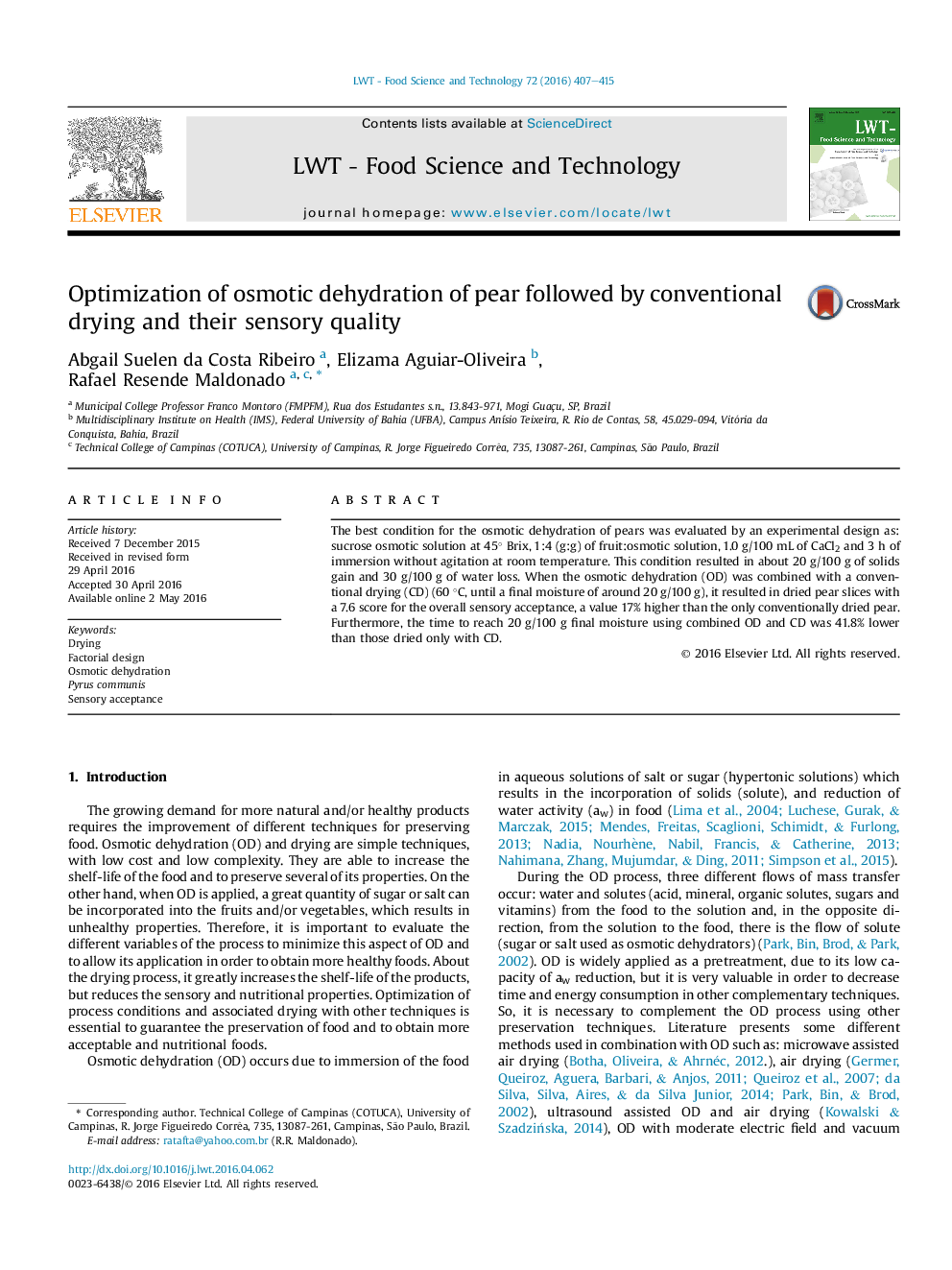| Article ID | Journal | Published Year | Pages | File Type |
|---|---|---|---|---|
| 4563299 | LWT - Food Science and Technology | 2016 | 9 Pages |
•The optimized condition of OD resulted in 30% of water loss.•Drying the osmotically dehydrated pears was 42% faster than the pears just drying.•Sensory acceptance of OD + D pears was 17% higher than that of D pears.•The main novelty was the analysis of OD on drying time and sensory acceptance.
The best condition for the osmotic dehydration of pears was evaluated by an experimental design as: sucrose osmotic solution at 45° Brix, 1:4 (g:g) of fruit:osmotic solution, 1.0 g/100 mL of CaCl2 and 3 h of immersion without agitation at room temperature. This condition resulted in about 20 g/100 g of solids gain and 30 g/100 g of water loss. When the osmotic dehydration (OD) was combined with a conventional drying (CD) (60 °C, until a final moisture of around 20 g/100 g), it resulted in dried pear slices with a 7.6 score for the overall sensory acceptance, a value 17% higher than the only conventionally dried pear. Furthermore, the time to reach 20 g/100 g final moisture using combined OD and CD was 41.8% lower than those dried only with CD.
